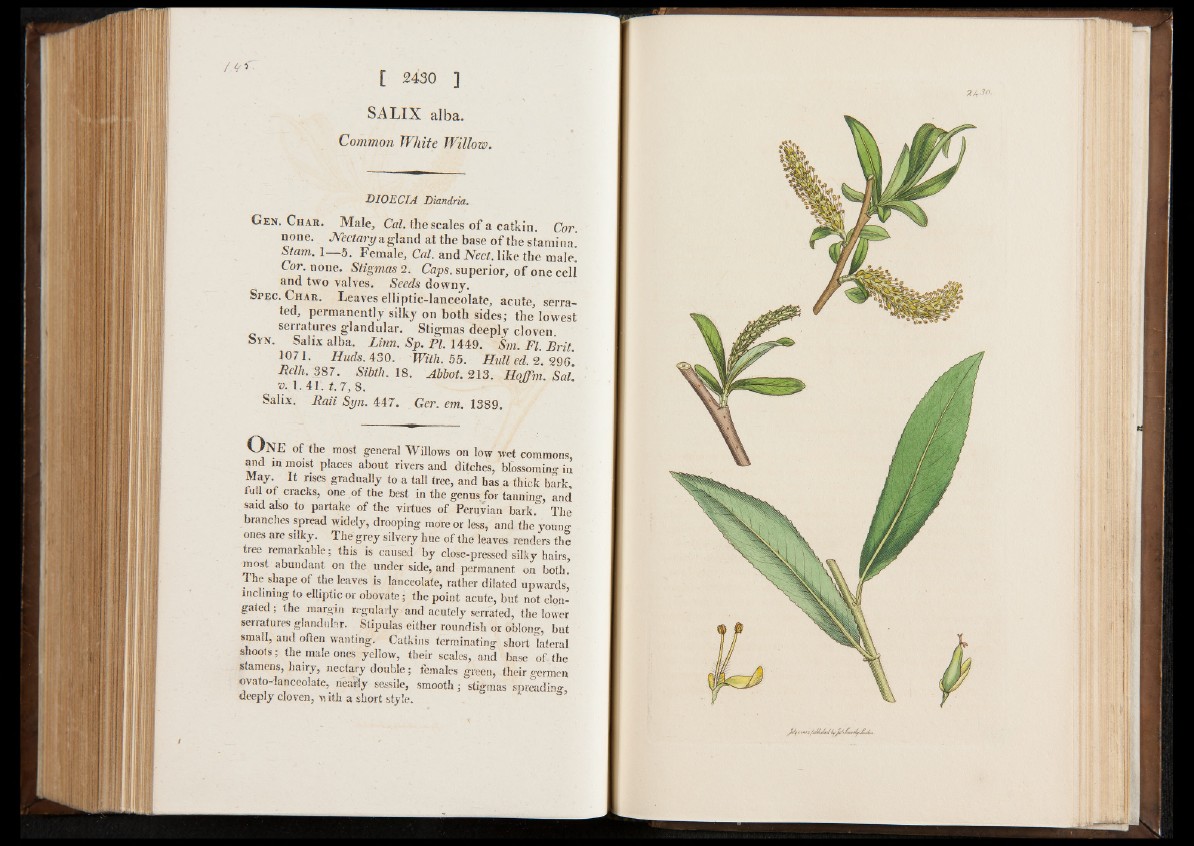
[ 2430 ]
SALIX alba.
Common White Willow.
DIOECIA Diandria.
Gen. Char. Male, Cal. the scales o f a catkin. Cor.
none. Nectary a gland at the base o f the stamina.
Siam. 1—5. Female, Cal. and Nect. like the male.
Cor none. Stigmas 2. Caps, superior, o f one cell
and two valves. Seeds downy.
Spec. Char. Leaves elliptic-lanceolate, acute, serrated,
permanently silky on both sides; the'lowest
serratures glandular. Stigmas deeply cloven.
Syn. Salix alba. L in n . Sp. PI. 1449. Sm. Fl. B r it
1071. Huds. 430. With. 55. H u ll ed. 2. 296.
Belli. 387. Sibth. 18. Abbot. 213. H o ffm . Sal
v . \ . 4 1 . t . 7 , 8 .
Salix. R a ii Syn. 447. Ger. em. 1389.
O N E of the most general Willows on low wet commons,
and in moist places about rivers and ditches, blossoming in
May. It rises gradually to a tall tree, and has a thick bark,
full of cracks, one of the best in the genus for tanning, and
said also to partake of the virtues of Peruvian bark. The
branches spread widely, drooping more or less, and the you no-
ones are silky. The grey silvery hue of the leaves renders the
tree remarkable; this is caused by close-pressed silky hairs,
most abundant on the under side, and permanent on both.
The shape of the leaves is lanceolate, rather dilated upwards,
inclining to elliptic or obovate; the point acute, but not elongated
; the margin regularly and acutely serrated, the lower
serratures glandular. Stipulas either roundish or oblong, but
small, and often wanting. Catkins terminating short lateral
shoots; the male ones yellow, their scales, and base of. the
stamens, hairy, nectary double; females green, their germen
ovato-lanceolate, nearly sessile, smooth; stigmas spreading,
deeply cloven, with a short style.